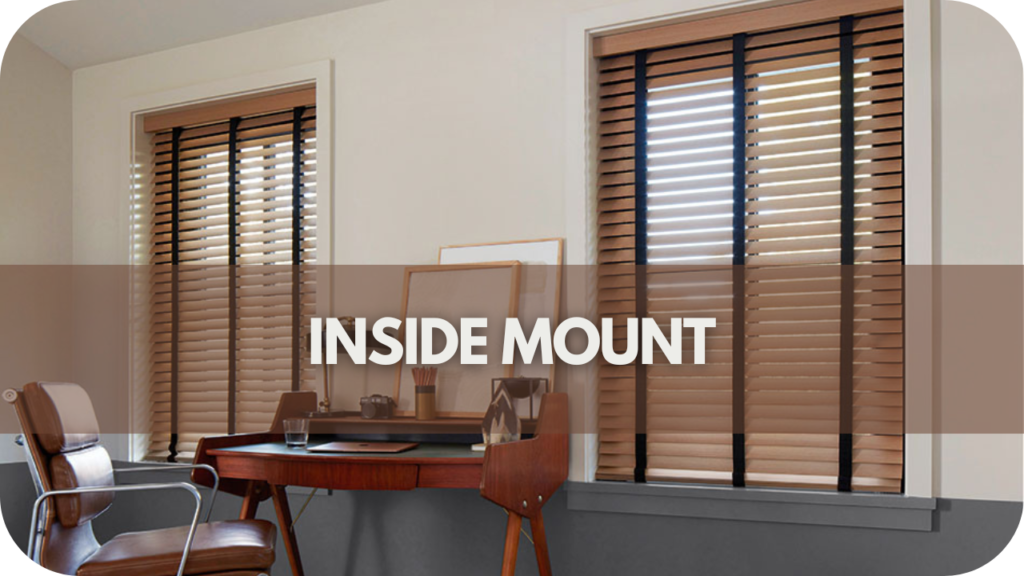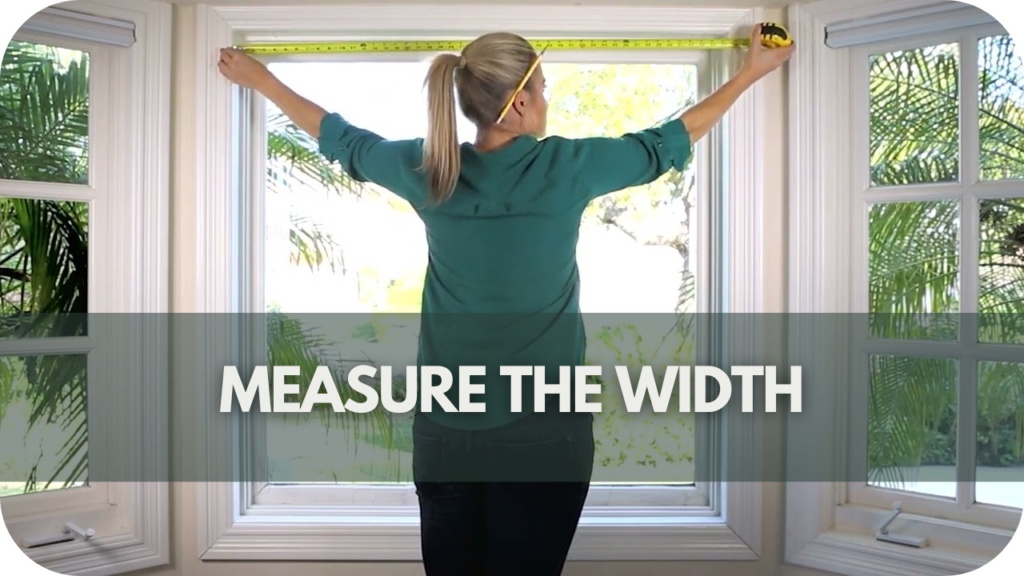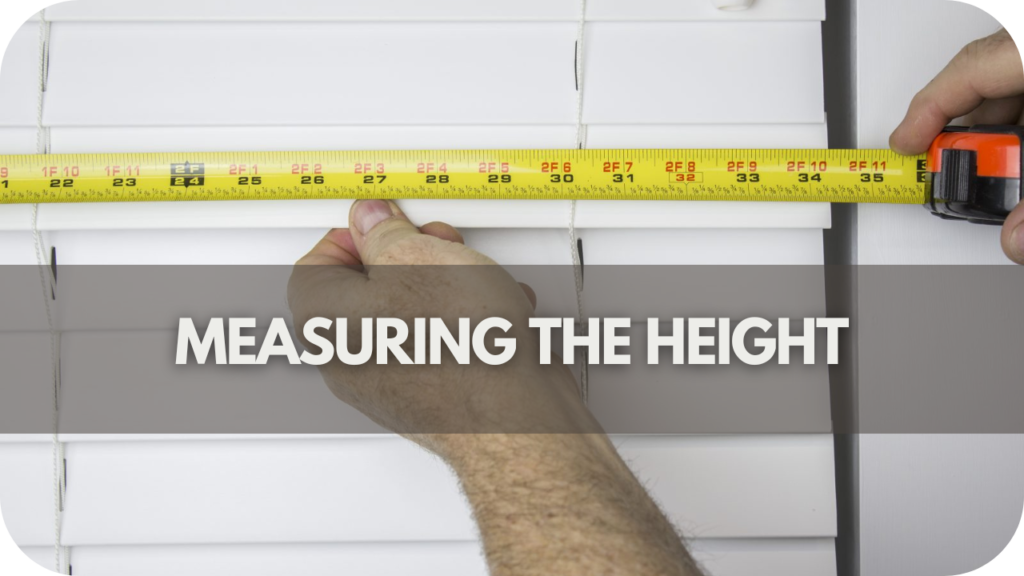Accurate measurements are crucial for achieving a perfect fit for horizontal blinds.
Correctly fitting blinds enhance the aesthetic appeal of your windows and provide optimal functionality, including effective light control and privacy.
This guide will walk you through the precise techniques to measure horizontal blinds accurately, ensuring you get the best results without costly mistakes.
Tools You Will Need

Having the right tools is essential to achieving precise measurements for your horizontal blinds. Using accurate tools ensures that your blinds fit perfectly and function smoothly. Here are the tools you will need:
- Tape Measure: A steel tape measure is recommended for its durability and precision. Avoid fabric or cloth tape measures, which can stretch and lead to inaccurate measurements.
- Notepad and Pen: Keep a notepad and pen handy to jot down your measurements immediately. Recording your measurements ensures you remember and mix them up.
- Step Ladder: A sturdy step ladder helps you reach higher windows safely and comfortably. Ensure it is stable and positioned on a level surface to avoid accidents.
- Measuring Tape: For best results, use a steel measuring tape. It provides more accurate readings and is less likely to bend or flex, which can cause errors.
Note: Avoid using a fabric or cloth measuring tape, as it can stretch and give inaccurate readings.
Types of Mounts: Inside vs. Outside
Choosing the mount for your horizontal blinds is crucial for aesthetics and functionality. Understanding the differences between inside and outside mounts will help you make the best decision for your space.
Inside Mount

An inside mount positions the blinds within the window frame, providing a clean, streamlined look. This option is ideal if you have decorative trim or want to maintain an unobstructed view when the blinds are open. To ensure a proper fit, measure the window opening’s width, height, and depth. Note that the depth of the window frame must be sufficient to accommodate the blinds and their mechanisms. Inside mounts offer a sleek appearance but require precise measurements to avoid gaps and ensure smooth operation.
Outside Mount

An outside mount places the blinds on the wall or ceiling outside the window frame. This mount type is perfect for windows with shallow frames, to cover unattractive trim, or to maximise light control and privacy. Measuring for an outside mount involves determining the exact width and height of the area you want to cover, adding extra width to minimise light gaps and achieve better coverage. Outside mounts are more forgiving with measurements and can create the illusion of more oversized windows.
Step-by-Step Guide to Measuring Inside Mount Horizontal Blinds
Achieving a perfect fit for your inside-mount horizontal blinds starts with precise measurements. Follow this guide to ensure your blinds fit seamlessly within the window frame.
Step 1: Measure the Width

Measure the width of the window opening in three places: the top, middle, and bottom. Record the narrowest measurement. Using the smallest measurement ensures the blinds will fit within the narrowest part of the window, preventing any binding or obstruction.
Step 2: Measure the Height
Measure the height of the window opening in three places: the left, centre, and right. Record the tallest measurement. Using the longest measurement ensures complete coverage of the window opening, allowing the blinds to operate smoothly without leaving gaps at the bottom.
Step 3: Measure the Depth
Measure the depth of the window frame from the front to the back. Ensure there is enough space for the blinds to operate without interference. The depth measurement is crucial for ensuring the blinds fit properly and can be mounted securely.
Step-by-Step Guide to Measuring Outside Mount Horizontal Blinds
Ensuring your outside mount horizontal blinds fit ideally requires precise and careful measurements. Follow this step-by-step guide to achieve the best results.
Step 1: Measure the Width
Determine the exact width of the area you want to cover. Measure across the window frame and add extra width for better light control and privacy. A common practice is to add 2-3 inches on each side of the window frame. This additional width helps to minimise light gaps and ensures comprehensive coverage, enhancing functionality and appearance.
Step 2: Measure the Height

Measure the height from the top of the area where the blinds will be mounted to the bottom. Include any additional height required for mounting above the window frame. Adding extra height, typically 2-3 inches, ensures that the blinds fully cover the window and can be mounted securely without leaving gaps at the top or bottom.
Step 3: Consider Additional Factors
Consider any obstructions, such as window handles or mouldings, that might interfere with the blinds’ operation. Ensure sufficient clearance on all sides for the blinds to function smoothly.
Common Measuring Mistakes to Avoid
Accurate measurements are essential for a perfect fit, but common mistakes can easily derail your efforts. Here’s what to watch out for:
- Using a Fabric Measuring Tape: Fabric or cloth measuring tapes can stretch and become distorted, leading to inaccuracies. Always use a steel tape measure for precise and reliable readings.
- Not Measuring in Multiple Places: Windows can be uneven or warped. Measure the width at the top, middle, and bottom and the height at the left, centre, and right. Always use the most minor and tallest widths to ensure a proper fit.
- Rounding Measurements: Avoid rounding measurements up or down. Use the exact measurements to ensure the blinds fit perfectly. Rounding can result in blinds that are either too small or too large for the window.
- Forgetting to Account for Obstructions: Window handles, locks, or other features can interfere with the blinds. Measure around these obstructions to ensure they don’t affect their operation or installation.
- Not Considering Mounting Space: When measuring for outside mounts, account for additional space needed for mounting above and around the window. This ensures the blinds cover the entire window and are installed correctly.
Tips for Accurate Measurements
Accurate measurements ensure your horizontal blinds fit perfectly and operate smoothly. Here are some essential tips to help you achieve precise measurements.
- Double-Check All Measurements: Always measure each dimension twice to confirm accuracy. This step helps catch any potential errors and ensures you have the correct measurements. By cross-verifying, you reduce the risk of ordering blinds that don’t fit properly, which can save time and money on returns or adjustments.
- Use the Right Tools: A steel tape measure is recommended for its durability and precision. Unlike fabric tape measures, which can stretch and lead to inaccurate measurements, steel tape measures provide consistent readings. Make sure the tape measure is straight and level while measuring to avoid skewed results.
- Measure in Multiple Places: For width, measure the window opening at the top, middle, and bottom. This is crucial because windows can sometimes be uneven. Record the narrowest measurement to ensure the blinds fit within the smallest part of the opening. For height, measure the window’s left, centre, and right. Windows may not always be perfectly square, so measuring in multiple places helps account for inconsistencies. Record the tallest measurement to ensure complete coverage and proper operation of the blinds.
- Record Measurements Clearly: As soon as you take your measurements, write them down clearly and organizedly. This helps prevent errors and confusion when placing your order. Keeping a precise record ensures you can easily refer to the measurements when needed and helps avoid mistakes in the final product.
- Account for Obstructions: Identify window handles, locks, or mouldings that could interfere with the blinds’ operation. Ensure your measurements accommodate these obstructions by including extra clearance where necessary. This consideration helps ensure that the blinds function smoothly and do not get stuck or hindered by any elements around the window.
Conclusion
Accurate measurements are vital to achieving a flawless fit for your horizontal blinds. Following the detailed techniques outlined, you can ensure a perfect installation that enhances function and style.
Ready to transform your space? Explore our range of custom-fit blinds at INTO BLINDS Melbourne and experience the difference precision makes.


